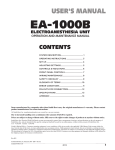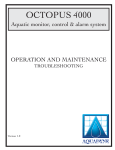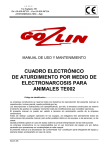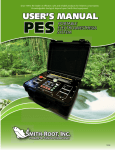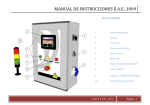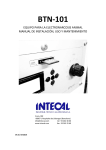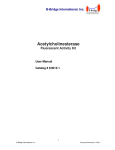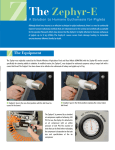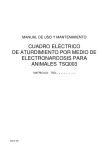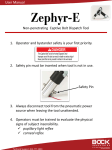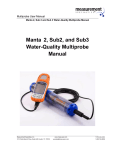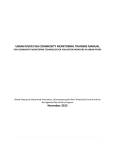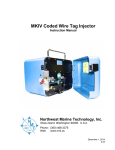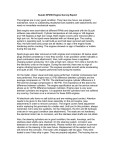Transcript
USER'S MANUAL APPENDIX SMITH-ROOT MODEL EA 1000A/B ELECTROANESTHESIA SYSTEM STANDARD OPERATING PROCEDURES IMPORTANT NOTE: This technology must not be used without first receiving hands-on training in safety and operating procedures from qualified, trained technicians. INTRODUCTION: The EA 1000A/B induces fish sedation in two sequential stages, a low voltage phase (Stage 1) followed by a high voltage, electronarcosis phase (Stage 2). Salmonids should never be exposed to high voltage without a prior low-voltage exposure unless euthanasia is desired. The low-voltage stage promotes rapid movement and physically prepares fish neurotransmission physiology for the high-voltage stage that follows, thus avoiding violent muscle contractions that can induce stress or cause injury. OPERATIONAL PROCEDURES: The Model 1000A/B EA System uses a 5-second delay from foot-switch initiation before electricity is applied to fish. The foot-switch (which helps ensure crew safety) must be applied throughout the entire Stage 1 and Stage 2 cycles. Premature release of the foot pedal will instantly terminate exposure and reset the timer and control circuitry, thus it is important not to interrupt the cycle unless an unsafe operating condition warrants doing so. Never adjust settings while the foot-switch is engaged or damage to the EA unit can result. Once initial setup has been completed and successfully trialed on a cross-section of test fish (please see below), the settings should be recorded and posted onsite. Each day prior to exposing fish to the electrosedation field, the operator must confirm that the desired EA1000A/B settings have been selected (and not inadvertently altered). Water conductivity, temperature and fish species are among the variables that may require adjustments to settings. It is therefore recommended that such parameters be monitored on a regular basis. If dark bands (called “branding”) appear on multiple fish, this may be an indication that fish are being injured (and that downward adjustments must be made to settings). SUGGESTED OPERATIONAL SETTINGS: For initial set-up, only two to three fish should be used at a time. The determination of optimum settings may require several tests. Stage 1 voltage should be just high enough to make the fish move excitedly. In the Pacific Northwest where conductivities are moderately low (<100 mS/cm), voltage for Stage 1 is commonly set in the range of 18-30 V for 24 to 48 seconds. Stage 2 voltage in the Pacific Northwest is commonly set in the range of 114-194 V for 32 to 68 seconds. Stage 2 voltages have the potential to injure fish, so operator care is necessary. Facilities with lowconductivity water (<30 mS/cm) may need to add salt to the treatment tank water so that sedation can be achieved at moderate voltages. The operator should always start at the lowest voltage and exposure times mentioned above. If sedation is not initially achieved after both stages are administered, Stage 1 exposure time should be increased in up to 8-second increments. If sedation is still not achieved, Stage 2 exposure time should be increased by 8 s increments up to 60 s. If sedation is still not attained, Stage 2 voltage should be increased by 16-V increments and re-assessed until sedation is achieved. Stage 2 voltage will likely be less than or equal to 194 V. The operator may want to try slightly higher voltages and reduced exposure times, all the while examining fish for branding marks. Detailed notes and record keeping will prove to be valuable allies in achieving successful fish sedation with the Smith-Root Model EA 1000A/B System and in reporting results. CONTACT INFORMATION: Please consult Smith-Root (360-573-0202) if further guidance is needed or if you are having any issues in achieving safe, successful fish sedation. #00272 14014 NE Salmon Creek Ave. Vancouver, 2013 WA 98686 Phone: (360) 573-0202 • Fax: (360) 573-2064 14
